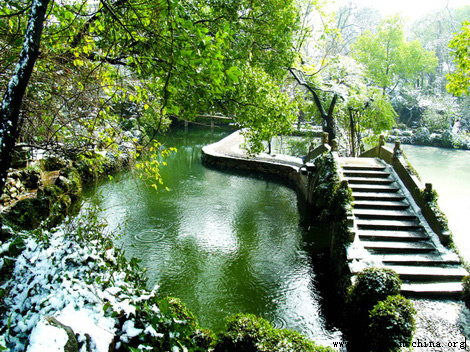| Home > Living In China |
Structures of Various Minority Nationalities of China
China is a multi-ethinicity country. The structures of various minority groups of China, each with its graceful bearing, have enriched the overall charming appearance of Chinese architecture. Among the various minority nationalities, the nationality and regional characteristics of the buildings of the Tibetan, Uygur, Dai and Dong ethnic groups are most striking and these nationalities have gained the greatest achievements.
.jpg)
The Tibetan structures are deeply rooted in the soil of the unique Tibetan Buddhist culture, although they have absorbed some images and techniques of Han nationality structures. Tibetan structures contain unique features, such as a grand scale, bright colors, and an unsophisticated and magnificent character. Beginning from the Yuan Dynasty, Tibet was formally included into Chinese territory WC can say that there is no other place in China like Tibet, wherein religion stands above all else, where life is full of a strong religious flavor and culture contains a strong theological atmosphere. Tibetan Buddhism was introduced into the Mongolian region in the Yuan Dynasty and was gradually widely accepted by the Mongolian people. During the Ming and Qing dynasties, the emperors also built some Lama temples and Lama pagodas in Beijing and north China in order to unite the Tibetan and Mongolian nationalities. Tibetan Buddhist temples mainly include three types: Tibetan style, Tibetan-Han style, and Han style.
.jpg)
The Uygur has gained the greatest achievements in Islamic construction, which belongs to the global Islamic architectural system, a simple and charming model of quiet, meditative character. Uygur Islamic architecture includes salat monastery and Holy Spirit tomb, and their molding style is quite different from Han structures. The vertical and perfectly round tall pagoda and the horizontal salat mosque formed with straight lines, achieve a rich contrast between round and square, curve and straight line, high and low, and vertical and level.
.jpg)
The Dai nationality, living in the south and southwest of Yunnan, believes in Theravada Buddhism, also called Hinayana Buddhism. The Buddhist monastery and pagoda, among buildings, have gained the highest achievements and possess the most distinguishing features.
.jpg)
The Dong ethnic group is distributed in the juncture of Hunan, Guangxi and Guizhou. Free from too much religious influence, a primitive sorcery prevailed among the people, so that, unlike many other nationalities, the Dong nationality's architectural artistic achievements are not manifested in religious structures. Instead, there are mainly folk public buildings, such as drum towers and storm-proof bridges, which the Dong group is renowned for. Apart from balustrade-type residences of unique features, the graceful and exquisite temples and pagodas are even more charming.
In addition, the Islamic structures of the Hui nationality, residences of the Naxi, Bai, Tujia and Korean nationalities all radiate their own splendor. The architectural works of art of these ethnic groups, like stars glittering in the sky, jointly form the splendid Chinese architecture together with Han nationality structures.
Custom
 more
moreWeb Dictionary
Primary&secondary
Beijing National Day School
Beijing Concord College of Sino-Canada
Brief Introduction of BCCSC Established in the year 1993, Huijia School is a K-12 boarding priva...Beijing Huijia Private School





 print
print  email
email  Favorite
Favorite  Transtlate
Transtlate 







